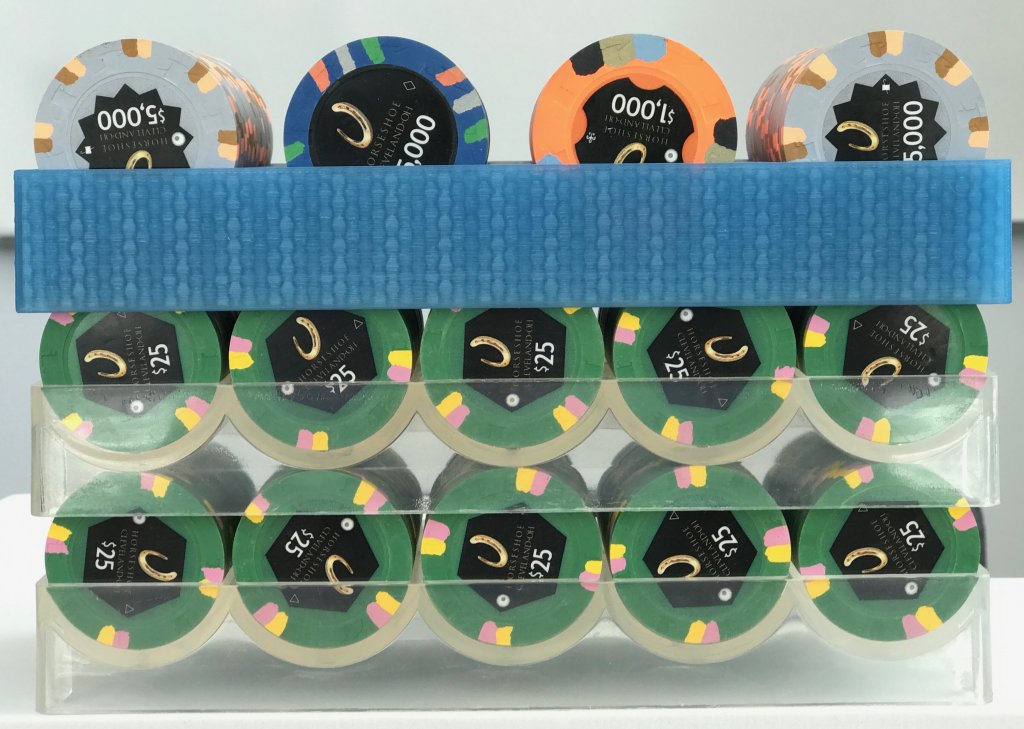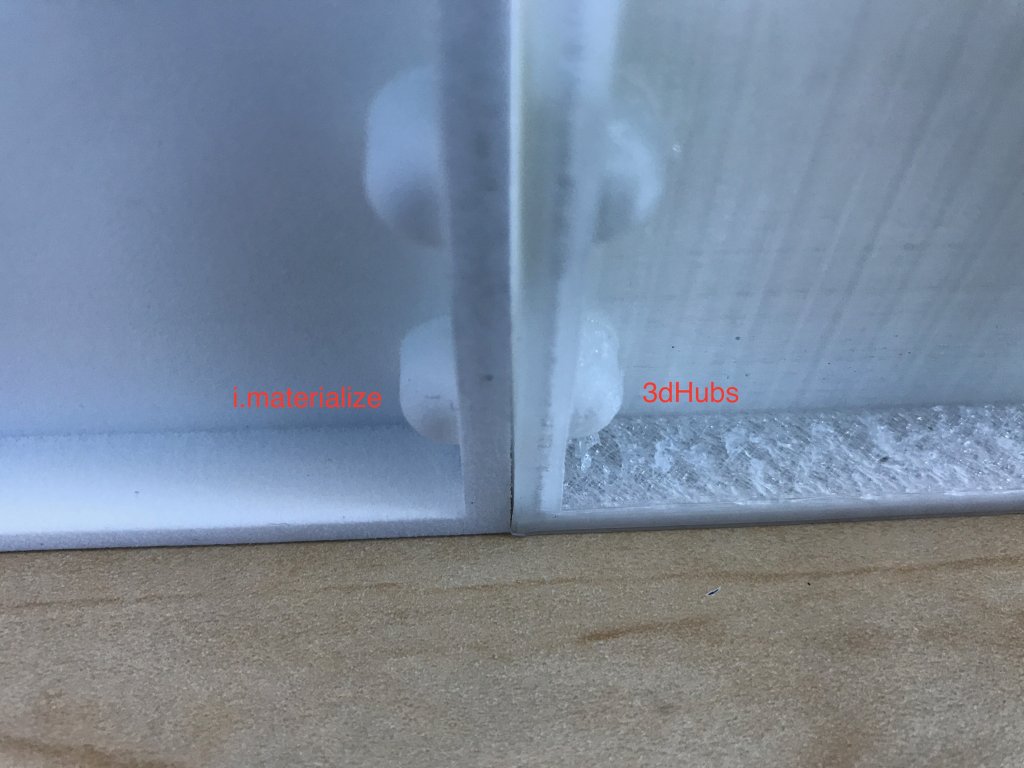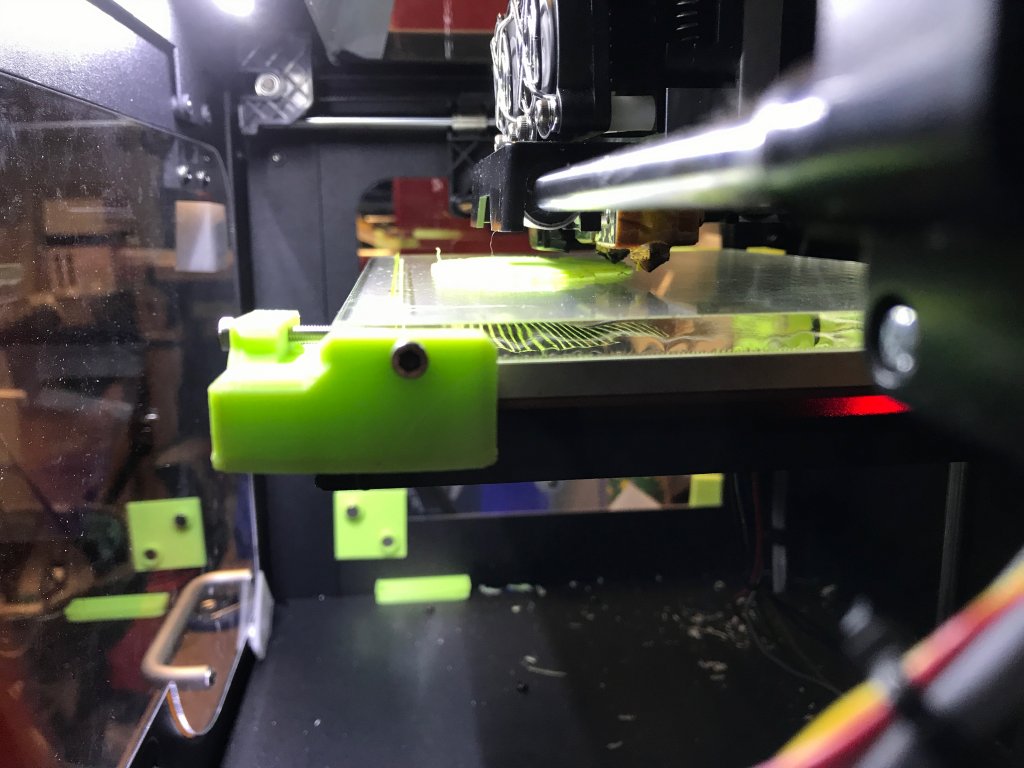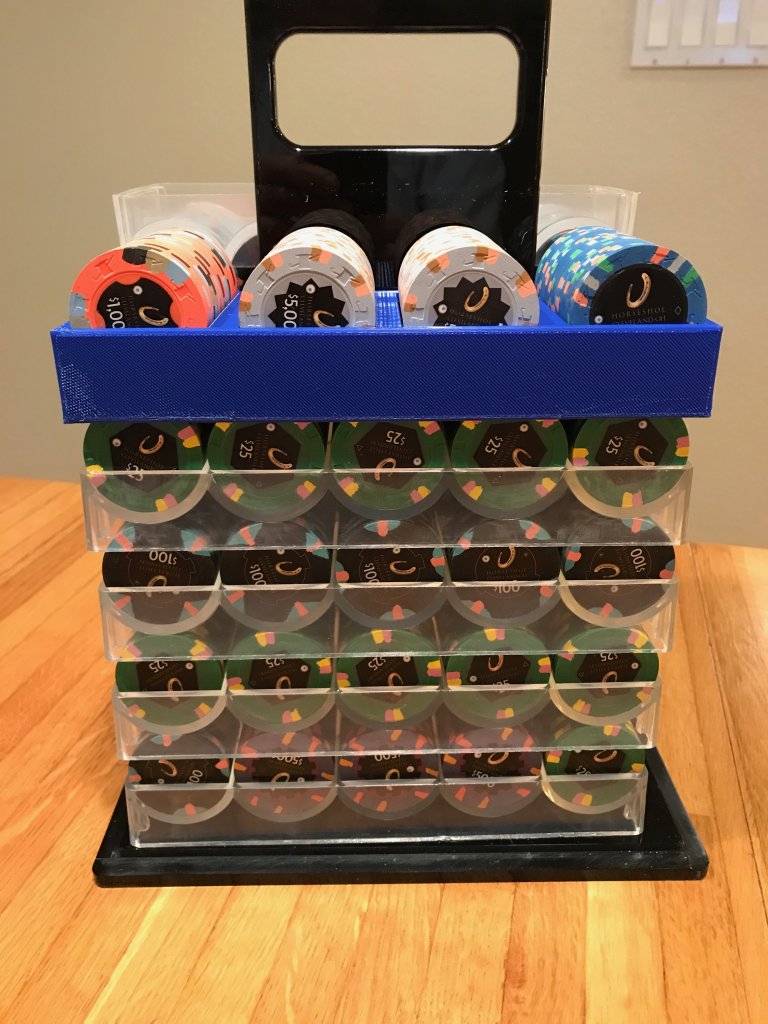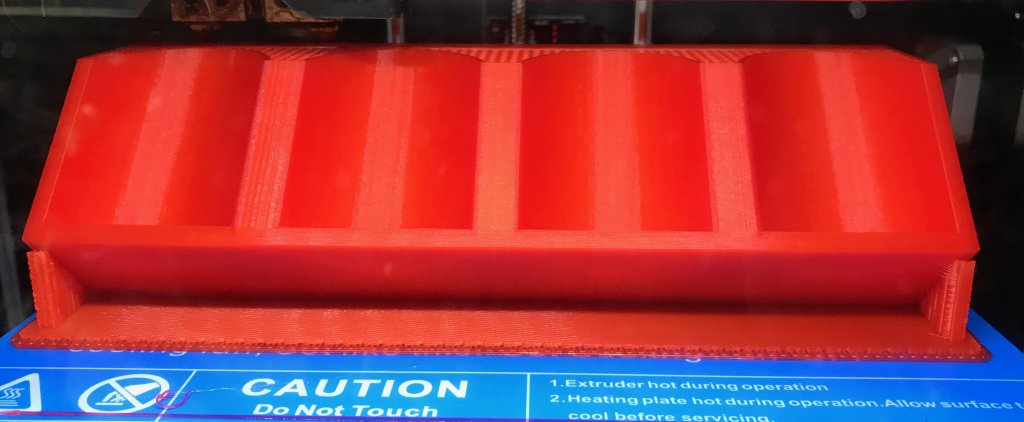So, you ask, how can I get one for my 43mm chips?
Options:
A. download the STL (design) file and print one on your 3D printer (or have a friend do it)
- This is a large part for most entry level 3D printers but they are getting bigger so if you can print a 210 x 76 x 30mm part you are good to try.
- I will send you what I have learned about how to print this part.
B. download the STL file and upload it to a 3D printing service and have them print it for you
- there are at least two levels of service for this:
- cheapest: about $53 and gets a usable print (I have a $10 off coupon to give you that will get the price down to $43 or so)
- expensive: about $95 and gets a nice and usable print
- again, I will share my experiences with you so you can get a better print than I did, probably
- the photos are showing the worst sections of the prints. They are very useable and unless you are really picky the cheapest one will be fine for most. Of course, you are on this forum so probably more picky than most so I give you the info so you can decide.
C. if the demand is small enough I can print some on my printer for a hopefully break-even fee of about $30 (probably less) (EDIT: 5/6/2017 - now $16) including USA shipping. I have a non-zero failure rate due to the size and it takes a while to print one correctly. I have successfully printed exactly one I really like so I won’t have good costs estimates until I find out what my true failure rate will be.
There is no charge for personal use. If you want to make these commercially let me know and we will work something out.
DM me if you want one for yourself. No obligation, of course.
- Edit - removed form as initial request is over, DM me if you want one.
* - 3dHubs is like the Uber of 3d printers. If you have a 3d printer you can setup a “hub” there and take orders for printing. I am sure the qualify varies by the vendor. I picked two different vendors. One completely failed but refunded my money. The other printed it in black but I had asked for clear so they printed a second one in clear (appears translucent white) for no charge.
** - I changed the bottom design a bit from the vendor printed ones to my “final” printed one. The three “nubs” were replaced by a same sized rounded “shelf” of sorts. This keeps the tray from sliding back and forth too much on the tray below it. The nubs were fine but the shelf prints easier, generally.

